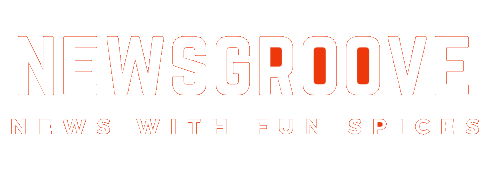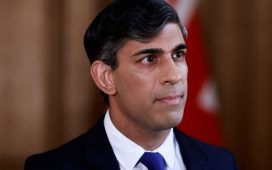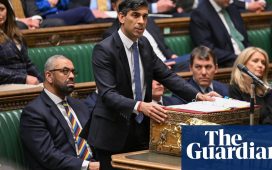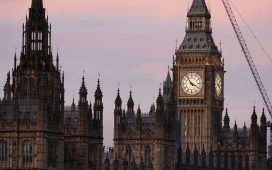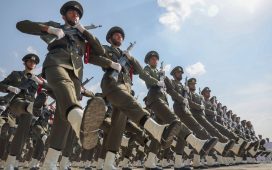An order to withhold $391m in military aid from Ukraine came directly from Donald Trump – despite repeated warnings from Defence Department staff that the move could be illegal, according to a new report citing unredacted emails.
In a message sent on 30 August, senior White House official Michael Duffey states that the decision came at the “clear direction” of the US president, who was allegedly awaiting a commitment from Ukraine to investigate his political rival Joe Biden.
Responding to the email, acting Pentagon comptroller Elaine McCusker warned that withholding the funds violated a 1974 law that prohibits the president from “impounding” appropriated funds for more than 45 days without permission from the legislative branch, according to The Independent.
The documents were published on New York University Law School’s online forum Just Security this week, triggering calls for their inclusion in the Senate impeachment trial of Trump.
In a statement, Senate Democratic Leader Chuck Schumer said: “These emails further expose the serious concerns raised by Trump administration officials about the propriety and legality of the president’s decision to cut off aid to Ukraine to benefit himself.”
Trump has yet to comment on the emails.
–––––––––––––––––––––––––––––––
For a round-up of the most important stories from around the world – and a concise, refreshing and balanced take on the week’s news agenda – try The Week magazine. Start your trial subscription today
–––––––––––––––––––––––––––––––
A timeline of some of the key moments so far
10 July – Ukranian officials arrive at the White House hoping to solidify ties with the US administration. Instead, they witness their hosts embroiled in a ferocious internal disagreement. In what The Washington Post calls “two volatile meetings”, the Ukrainians allegedly learn that their government’s relationship with the US, and nearly $400m in military aid, is contingent on their president publicly announcing and undertaking an investigation into Joe Biden. The news apparently comes as a surprise to a contingent of US officials attending – chief among them John Bolton – who, the Post reports, react with “fierce opposition”.
25 July – Trump holds his now-infamous phone call with Zelensky. According to details published on the Ukraine president’s official website that day, Trump encouraged Zelensky to “improve image of Ukraine” and “complete investigation of corruption cases, which inhibited the interaction between Ukraine and the USA”. Trump later denies putting pressure on Ukraine, saying an “absolutely perfect phone call”.
12 August – A whistleblower files a complaint with the Inspector General of the Intelligence Community Michael Atkinson.
9 September – Atkinson notifies the Democratic chairman of the House Intelligence Committee, Adam Schiff, of an “urgent concern” regarding a whistleblower, but the Director of National Intelligence Joseph Maguire prevents the full report being communicated. There is enough information that on the same day, three House committees launch an investigation of alleged efforts by the president, his lawyer Rudy Guiliani and others, to pressure Ukraine to help Trump get re-elected. The committees request information on Trump’s 25 July phone call with Zelensky.
24 September – The formal impeachment inquiry is announced by Democratic Speaker of the House Nancy Pelosi. The following day, Trump releases a copy of the rough transcript of the 25 July call.
8 October – The White House announces it will not cooperate with the congressional investigation, and orders US Ambassador Gordon Sondland, who was allegedly central to the Trump administration’s “unofficial” efforts to pressure Ukraine, not to testify.
17 October – US Ambassador to the European Union Gordon Sondland testifies, saying that Poor youhe took Trump at his word that there was no quid pro quo with Ukraine. However, Sondland also told lawmakers that efforts by Giuliani to persuade Ukraine to open an investigation into Trump’s political rivals “kept getting more insidious”.
22 October – Bill Taylor, the acting US ambassador to Ukraine, tells investigators how conventional channels of diplomacy were sidelined by an “irregular” group of politically appointed officials. He says he was told on more than one occasion by Sondland and others that US military aid to Ukraine was contingent on a public declaration of an investigation into Trump’s political rival, Biden.
29 October – Lt. Col. Alexander Vindman, the top Ukraine expert on the US National Security Council, tells investigators that the transcript of the call that the White House made public had some crucial omissions. He also states “I did not think it was proper to demand that a foreign government investigate a US citizen,” adding that he believed Trump’s actions would “undermine US national security”.
31 October – The House conducts its first vote on the impeachment inquiry, formalising the process for the public hearings. “With a vote of 232-196, it’s a mostly partisan affair,” CNN reports. “Two Democrats oppose the measure, one former Republican supports it. But otherwise, Democrats voted yes and Republicans voted no.”
4 November – Sondland returns to Capitol Hill to testify for a second time and revises his testimony to say that he now does recall a quid pro quo with Zelensky.
Sondland says he does not recall other key details from that period, including how many times he talked to Trump on the phone.
6 November – The testimony by the acting US ambassador to Ukraine, Bill Taylor, is published. Taylor cites two White House officials as saying Trump would not “sign a check” for almost $400m in military aid until Ukraine made good on its end of the deal, The Guardian reports. Trump wanted the Ukrainian president to “go to a microphone and say he is opening investigations of Biden and 2016 election interference”, Taylor claimed.
13 November – House Democrats stage the first day of public hearings as part of the impeachment inquiry, where acting ambassador to Ukraine Taylor and deputy assistant secretary of state George Kent testify.
Taylor describes two channels of American policy towards Ukraine: a “regular” channel, in which he interacted with officials at the National Security Council, and an “irregular” channel, which included Rudy Giuliani, President Trump’s lawyer, and Mick Mulvaney, the acting White House chief of staff, The New Yorker reports.
15 November – The committee hears from former US ambassador to Ukraine Marie Yovanovitch, who claims that Giuliani worked with Ukrainians who were angered by her behaviour. “What continues to amaze me is that they found Americans willing to partner with them,” she says. “And working together, they apparently succeeded in orchestrating the removal of a US ambassador.”
20 November – Sondland is called to testify and delivers a damning account of the events. He states that the highest-level officials working on US-Ukraine policy at the White House and US State Department “knew what we were doing and why” by encouraging Ukraine to launch investigations.
“Was there a quid pro quo?” Sondland asks in his opening statement. “The answer is yes.”
21 November – Next up to testify is Fiona Hill, former senior director for Europe and Russia at the National Security Council (NSC), and David Holmes, an official at the US embassy in Kiev. Hill previously told House investigators that the then national security adviser, John Bolton, instructed her to report her concerns about Giuliani and Trump’s dealings with Ukraine to NSC lawyers, Politico reports.
3 December – Following the testimony of Yovanovitch, Sondland, Hill and Holmes, the House Intelligence Committee publishes a report stating: “The impeachment inquiry has found that President Trump, personally and acting through agents within and outside of the U.S. government, solicited the interference of a foreign government, Ukraine, to benefit his reelection”.
5 December – Pelosi announces that the committee will begin drafting articles of impeachment, telling the media that Trump’s “wrongdoing strikes at the very heart of our Constitution”.
10 December – The Judiciary Committee unveils its articles of impeachment: abuse of power and obstruction of Congress. Trump is the first president to be charged with these specific articles.
12 December – The House Judiciary Committee deliberates over two articles of impeachment, accusing Trump of abusing the power of his office and with obstructing Congress, during a highly charged debate that lasts for more than 14 hours.
13 December – The panel approves the two articles of impeachment on a party-line 23-17 vote. The result makes Trump the fourth US president – after Andrew Johnson, Richard Nixon and Bill Clinton – to face impeachment by the House.
18 December – Following a two-month inquiry, the House of Representatives votes in favour of the two articles of impeachment.
After the votes pass, Speaker Pelosi quells applause from some Democrats in the chamber, saying it is “tragic” that the president’s reckless actions make impeachment necessary.
22 December
A new trove of documents is released following a freedom of information lawsuit, including the 25 July email in which Duffey, the OMB’s associate director of national security programmes, tells defence officials to withhold aid to Ukraine.
The content of the email suggests Duffey “knew the hold could raise concerns”, according to CNN. “I appreciate your keeping that information closely held to those who need to know to execute direction,” the official wrote.
But OMB spokesperson Rachel Semmel seeks to downplay the significance of the email, saying: “To pull a line out of one email and fail to address the context is misleading and inaccurate.”
2 January 2020
Unredacted emails seen by the Just Security online forum reveal discussions within the Trump administration in which the Pentagon repeatedly sounded the alarm that the freeze on funding was in violation of the law.
In the emails, Office of Management and Budget official Duffey writes that he has “clear direction from Potus to continue to hold” military aid meant for Ukraine, despite repeated warnings about the legality of such a decision.
